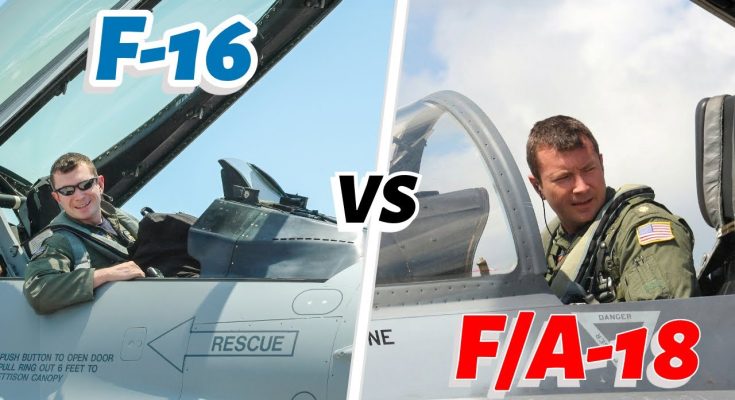The debate between flying the F-16 Fighting Falcon and the F/A-18 Hornet is a common topic among aviation enthusiasts and military professionals. Both are world-class fighter aircraft, each with its own set of advantages, mission capabilities, and design philosophies. The choice between the two depends largely on the specific mission requirements, pilot preferences, and the operational environment. Here’s a breakdown of both aircraft to understand which might be “better” depending on context.
F-16 Fighting Falcon: A Versatile and Agile Workhorse
The F-16 Fighting Falcon is a multirole fighter developed by General Dynamics (now Lockheed Martin) for the U.S. Air Force in the late 1970s. Known for its lightweight design and exceptional agility, the F-16 has become one of the most widely used fighters in the world. The aircraft’s fly-by-wire system gives it remarkable control and maneuverability, allowing pilots to perform complex aerobatics and tight turns, making it especially effective in air-to-air combat.
The F-16 was designed primarily for air superiority and strike missions, but its capabilities extend to close air support (CAS), ground attack, and even reconnaissance. The aircraft is relatively inexpensive to maintain compared to other fighters, making it an attractive option for many air forces around the globe. The F-16 is highly effective in combat scenarios requiring speed, precision, and maneuverability.
Its cockpit layout and single-engine design make it a slightly simpler aircraft to fly than the F/A-18, which could be an advantage for newer pilots. The range and payload capacity are also impressive for an aircraft of its size. With the ability to carry a variety of weapons, including bombs, missiles, and air-to-air weapons, the F-16 is a proven fighter in a wide range of combat roles.
F/A-18 Hornet: A Dual-Role, Carrier-Capable Fighter
The F/A-18 Hornet, developed by McDonnell Douglas (now Boeing) in the late 1970s, is a carrier-capable multirole aircraft designed for the U.S. Navy. The “F” in its name stands for fighter, and the “A” represents attack, reflecting its dual-role capability in both air superiority and ground attack missions. The F/A-18 was designed with the specific challenges of operating from aircraft carriers in mind, including its tailhook for landing and robust landing gear to withstand the stresses of carrier launches and landings.
In terms of versatility, the F/A-18 is often considered superior due to its ability to perform both air-to-air and air-to-ground missions with ease. The aircraft’s dual engines provide an extra level of safety, especially when operating from an aircraft carrier where immediate return to base might not always be an option. The F/A-18 has more payload capacity than the F-16, which makes it an excellent choice for missions requiring heavier munitions or larger fuel loads.
The F/A-18 also excels in carrier-based operations, which the F-16 was not designed to do. The ability to operate from the deck of a ship allows the F/A-18 to be deployed in naval warfare and expeditionary operations, giving it a unique advantage over land-based fighters.
Which Is Better?
When comparing the F-16 and F/A-18, the question of “which is better?” really boils down to the mission at hand and the environment in which the aircraft will operate.
- For Air Forces with no need for carrier operations, the F-16 is the better choice due to its agility, range, and multirole capabilities at a relatively lower cost.
- For Navies or forces requiring carrier operations, the F/A-18 is clearly the superior option, offering greater flexibility in both air and ground attack missions, as well as carrier compatibility.
Both aircraft are highly capable and have earned their reputation as combat veterans. However, the F/A-18 is more versatile in terms of operational environments due to its carrier capabilities, while the F-16 is often considered the more agile and cost-effective option for land-based operations. Ultimately, it depends on the mission requirements, the type of force, and the operational environment.



